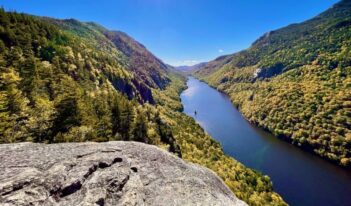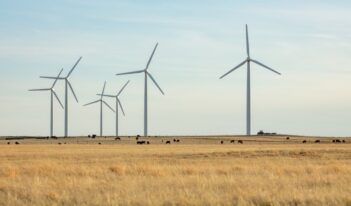
Scholar defends the legality of Biden-era conservation rule.
The Conservation and Landscape Health Rule, better known as the Public Lands Rule, marked a notable shift in Bureau of Land Management (BLM) policy under the Biden Administration. Historically, the BLM interpreted its mandate to manage public lands for multiple uses to prioritize commercial uses such as grazing, mining, and oil and gas extraction. The 2024 rule grants conservation uses—such as environmental mitigation and restoration leases—equal status in BLM land-management decisions.
Opposition was as strong as it was swift. Critics insisted that any consideration of conservation uses exceeds the land-management authority granted to the BLM by the Federal Land Policy and Management Act of 1976 (FLPMA). Conservation, these opponents argue, amounts to the non-use of land, falling outside the BLM’s statutory mandate. Challenges to the Public Lands Rule—including suits brought by conservative western states and another by a coalition of farming, ranching, mining, and energy industry groups—raised similar arguments. Litigation is ongoing.
In an article published late last year, Jamie Pleune of the S.J. Quinney College of Law assesses arguments against the legality of the Public Lands Rule. She identifies two key objections: first, that conservation is not a valid use of BLM land under FLPMA, and, second, that conservation is not land use in the first place. Pleune argues that both claims misunderstand the FLPMA mandate and the economic value of conservation activities.
Although FLPMA does not use the term conservation, Pleune explains that conservation goals and practices are “woven throughout the statute.” Specifically, FLPMA directs the BLM to manage public lands under the principles of “multiple use and sustained yield”—a framework known as the FLMPA dual mandate.
Pleune suggests that satisfying the dual mandate demands a multi-generational approach to land management. Multiple use entails managing public lands to meet the “present and future needs” of the American people, she explains, and sustained yield demands the achievement “in perpetuity” of robust “periodic output” of natural resources. Because FLPMA also defines cultural, historical, and ecological values as natural resources, Pleune concludes that the BLM has “broad authority” to put conservation uses on par with commercial uses of public lands.
Subsequent legislation directed the BLM to pursue “landscape resilience and ecosystem functionality” to address issues such as rangeland health and wildfire management. From these laws, Pleune infers longstanding congressional understanding that including conservation as a land management goal is permitted—and, sometimes, required—by FLPMA to guarantee the multiple use and sustained yield of BLM lands.
Pleune explains that land is traditionally considered to be in use when it generates economic value. Conservation creates no economic value, opponents of the Public Lands Rule contend, and so it cannot be said to use the land. “The problem with this assumption,” Pleune insists, “is that it is wrong.”
The direct economic value of land conservation is large and growing, Pleune observes. The ecological restoration sector alone generates $9.5 billion each year and employs more workers than the coal or logging industries. Some scholars valued the voluntary carbon credit market, another sector of the “conservation marketplace,” at $1.9 billion in 2022.
Growing demand means that the Public Lands Rule could generate revenue for the federal government by allowing the BLM to lease public lands for mitigation and restoration uses, Pleune argues. These leases, she continues, could also reduce demands on limited agency resources by allowing private entities to complete much-needed conservation projects on BLM land.
Conservation uses of public lands can also generate indirect economic benefits. Under some existing environmental regulatory schemes, entrepreneurs receive credits for conservation activities that can be “spent” to mitigate environmental harms elsewhere. In a complex regulatory environment defined not only by BLM rules but also by multiple federal and state environmental statutes, Pleune argues that leasing BLM land for mitigation projects—a conservation use—encourages the total use of federal public lands by easing regulatory compliance.
More flexible allocation of harms and benefits across different projects also helps the BLM to accommodate competing priorities imposed by the dual use mandate, Pleune suggests. This practical flexibility, she notes, improves both economic returns and environmental outcomes across public lands.
The Public Lands Rule, Pleune explains, is not only a necessary corrective to historical BLM land-management practice—an approach she finds ill-suited to face the “intertwined crises of biodiversity loss and climate change.” It also, she concludes, falls squarely within the boundaries of the agency’s legal mandate.
Today, the future of the Public Lands Rule stands in grave doubt. In early February—just two days after his confirmation—Secretary of the Interior Doug Burgum signed Secretary Order No. 3418. Among other directives implementing President Donald J. Trump’s pro-oil and gas energy agenda, the order instructs the BLM, a U.S. Department of the Interior subagency, to make every appropriate effort to “suspend, revise, or rescind” the Public Lands Rule. Then, in April, the Trump Administration posted formal notice of its intent to rescind the rule.
Pleune’s analysis nonetheless remains relevant. There is reason to believe that the Trump Administration may justify its recession by arguing that conservation falls outside of the BLM’s statutory mandate to justify revising or rescinding the rule. Burgum, the former Governor of North Dakota, and Kathleen Sgamma, President Trump’s nominee to head the BLM, both participated in suits challenging the Public Lands Rule. Before her nomination, Sgamma testified to the House Natural Resources Committee that, when it comes to BLM land management, “conservation is a goal … not a use.”



